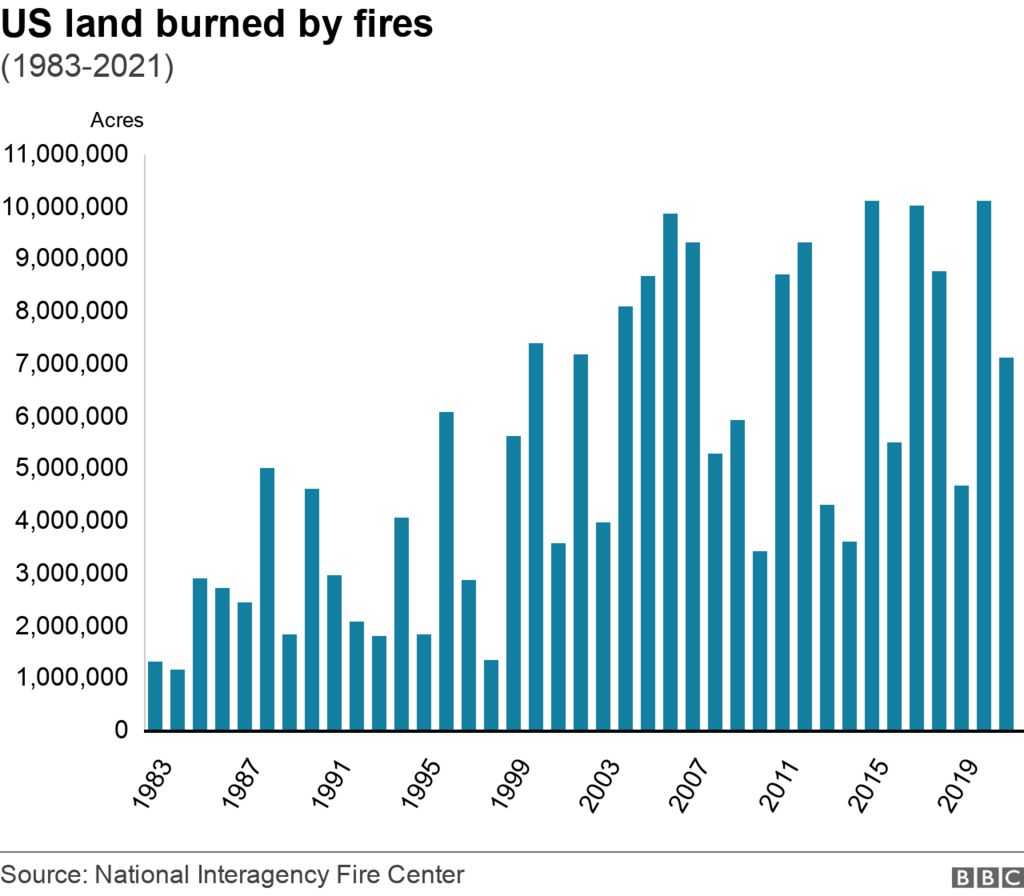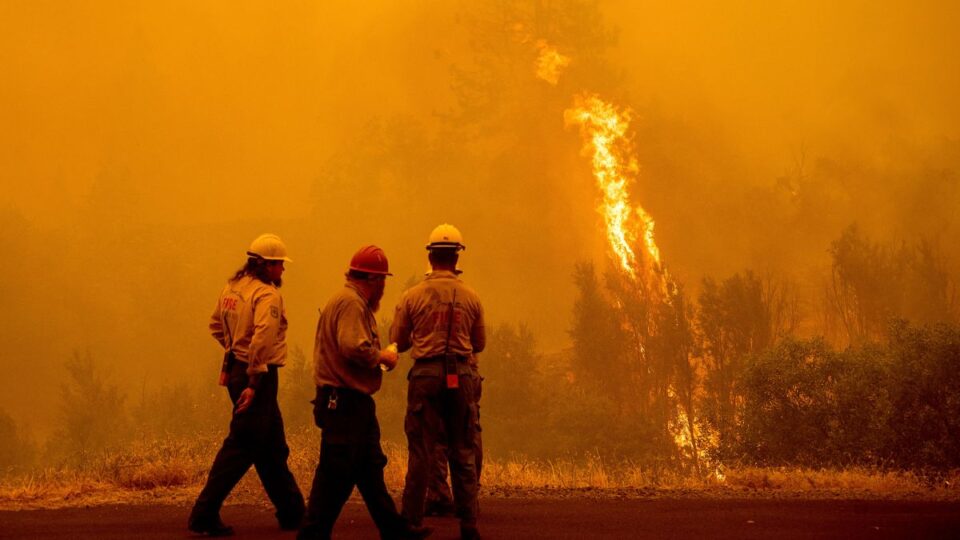A wildfire in California has exploded in size to become the largest blaze in the state so far this year.
The McKinney Fire, which started in the northern Siskiyou county on Friday, has already burnt 21,000 hectares (52,500 acres), the state’s fire service said.
At least 2,000 residents as well as trekkers on the Pacific Crest hiking trail have left the area. An unknown number of homes have been destroyed.
It was still 0% contained on Monday morning, the fire service reported.
McKinney Fire is burning in the Klamath National Forest, near the border with Oregon. Some 650 firefighters are battling the flames in punishing heat, the Los Angeles Times reports.
A red flag warning indicating the threat of dangerous fire conditions is in place, as California suffers from persistent drought conditions.
A state of emergency was declared in Siskiyou county on Saturday, after homes were destroyed and infrastructure was threatened, state governor Gavin Newsom said.
The fire was “intensified and spread by dry fuels, extreme drought conditions, high temperatures, winds and lightning storms”, he added.
Several communities are being threatened, including Yreka and Fort Jones, the US Forest Service said.
‘I just saw it explode’
Harlene Althea Schwander, an artist, had only moved into her new home near the fire’s starting point a month ago, and had not yet unpacked everything.
“Three generations of beautiful things, all of my paintings… they’re all gone, and I’m very sad,” she told Reuters.
“When I saw it coming over from the community centre, and I just saw it explode in the dark. I knew the house was gone because I knew right where it was. And the fire department came and told me, ‘just leave now,'” she said.
There was one piece of good news however – Ms Schwander’s daughter-in-law had grabbed her jewellery before they fled.

Jonathan Dixon, who lives in Yreka, a small town with a population of 7,590, told the Los Angeles Times that he fears his house – and collection of art nouveau antiques, artwork and sculptures – will be gone when he returns.
“I’m terrified that my house is going to burn down, and I’ve kind of accepted it,” Mr Dixon, 37, told the paper.
Another Yreka local, Jan Williamson, 66, told the paper she and her husband had to flee with their 40-year-old daughter, Leanne, who is a quadriplegic and has cerebral palsy.
They had to leave behind vital equipment that helps with Leanne’s care and comfort. Leanne is also autistic, and bites herself when her routine is disrupted, or she becomes frustrated.
“Whenever it’s especially bad like this, we just have to take one or two minutes at a time, and just manage to get through each day,” Ms Williamson said.
Authorities warn that possible thunderstorms could result in more fires developing in the coming days.
“The fuel beds are so dry and they can just erupt from that lightning,” US Forest Service spokesperson Adrienne Freeman told reporters, adding that the “gusty erratic winds” that come with thunder cells can “blow fire in every direction.
The fire is the second major blaze to hit the state in recent days. The Oak Fire, near Yosemite National Park, is still roaring after eight days but has been 67% contained, the fire department Cal Fire said.
California still has months of its fire season ahead.
Climate change increases the risk of the hot, dry weather that is likely to fuel wildfires.
The world has already warmed by about 1.1C since the industrial era began and temperatures will keep rising unless governments around the world make steep cuts to emissions.
Are US wildfires getting worse?
By BBC Reality Check
More than 53,000 acres (21,000 hectares) have been burned across California so far this year, according to the latest data from Cal Fire.
Those statistics are up to 25 July, so the ongoing blaze in northern California won’t be included.
Even when taking the McKinney Fire into account, the amount of land burned so far this year is some way below the five-year average, which is more than 415,000 acres (168,000 hectares).
However, it’s still early in the fire season, and there’s been an increase in the amount of land burned by wildfires in California and across the US over the last few decades.
Year-on-year, the amount of land burned fluctuates considerably, but the trend in the US has been upwards since reliable data was first recorded in the 1980s.





